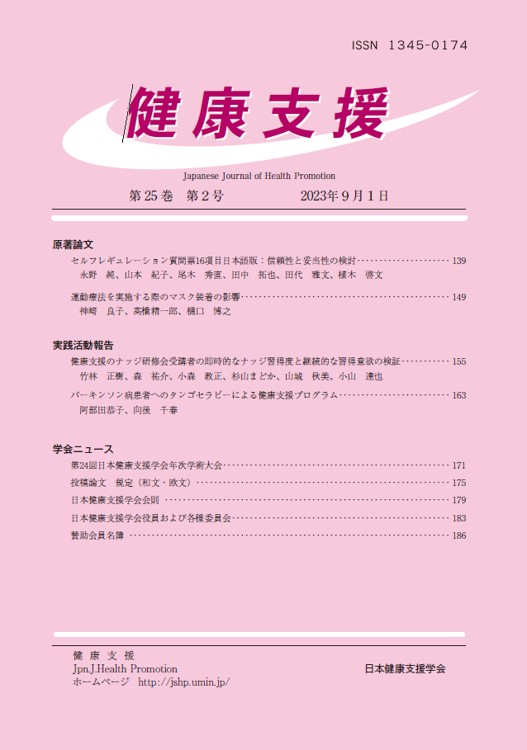BACKGROUND:Local governments are required to practice health promotion by using nudges. They are expected to be able to practice nudges in the field of health promotion by completing the training and subsequent participation in the nudge unit (nudge use promotion team).
OBJECTIVE:We aimed to design a training session for local government officials to acquire health promotion nudges immediately and motivate them to learn continuously.
METHODS:A series of three nudge training sessions were held in Kyotango City(Kyoto Prefecture). The EAST(Easy, Attractive, Social, and Timely) nudge framework was used to design the training sessions. Participants in the
third training session were surveyed about their nudge mastery phase and motivation to participate in a nudge unit
using a self-administered, anonymous questionnaire.
RESULTS:There were 71 participants in the first session, 50 in the second session, and 44 in the third session. Of 44 participants in the third session, 43 responded to the survey. Before the first session, 60.0%(n=24)answered that they had no knowledge of nudges. After the third session,
73.8%(n=31)answered that they would like to use nudges, and 11.9%(n=5)answered that they were using nudges
(p<0.001). Also, 81.0%(n=34)answered that they preferred to establish a nudge unit, and 46.5%(n=20)answered
that they were willing to participate in it.
CONCLUSION:The results suggest that training sessions combining the EAST elements may contribute to the immediate mastery and continuous motivation to learn nudges and the training of nudge practitioners in health promotion. Meanwhile, there was a bottleneck between the willingness to establish a
nudge unit and the willingness to participate, which needs to be verifi ed to overcome this bottleneck in the future.
View full abstract
